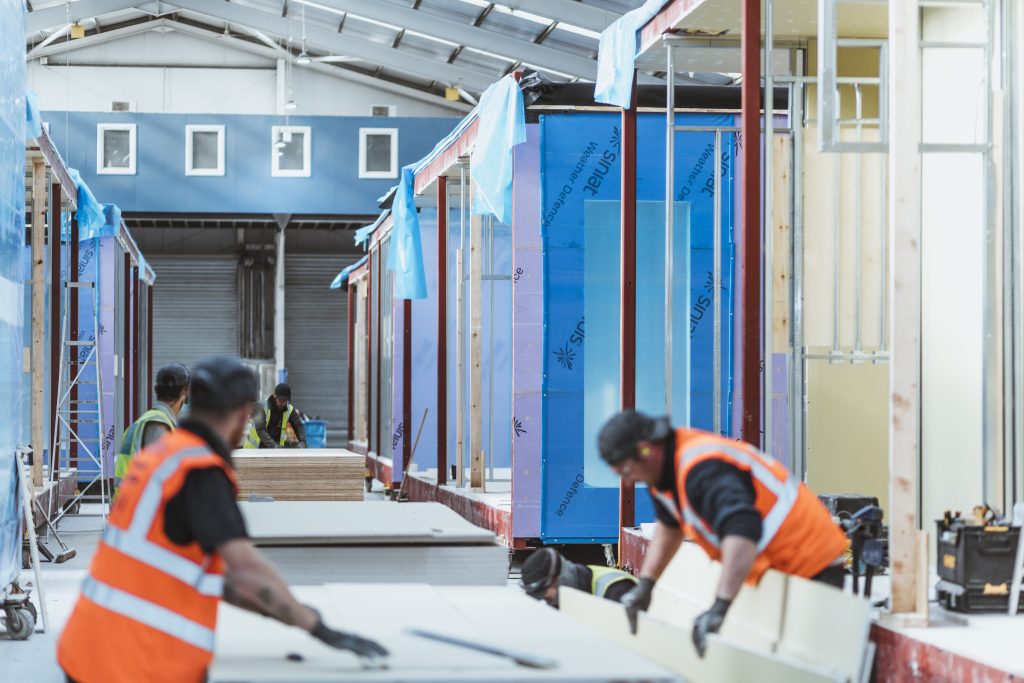Sector - Sustainability
Climate change and construction: a marriage made in hell

Writing for UK Construction Online, David Harris, CEO of offsite manufacturing company, Premier Modular, examines how the construction industry is contributing to climate change globally and the solutions at hand, and offer advice on how to keep productivity resilient in the face of an uncertain future.
The construction industry is gearing up to become more sustainable as climate change continues to disrupt traditional building programmes. In July, heavy rainfall and lower-than-average temperatures contributed to numerous project delays, according to ONS data, a reflection of the ongoing intensification of the UK’s climate as storms, extreme precipitation and heatwaves rise.
With the construction and operation of the built environment responsible for approximately 40 per cent of global greenhouse gas emissions, mass decarbonisation of building materials, supply chains and building practices creates a key solution to the issues at hand. By reducing embodied and operational carbon and moving toward greener practices, the construction industry will be empowered to slow climate change fallout and establish greater resilience in future.
A climate of risk
Every five days, an area the size of Paris is added to the global built environment. This activity is contributing to levels of embodied carbon – emissions produced throughout the construction of a building – and operational carbon – emissions produced during its use and management. To limit these emissions, construction companies and manufacturers are gradually shifting toward low carbon materials, more innovative technological solutions and embracing the circular economy. In doing so, companies could improve their own business’ resilience, as well as doing their bit for the environment.
Decarbonising construction practices could equally help to limit risks to workers too. Research has shown that exposure to high temperatures heightens the risk of significant injuries among construction workers, whilst the Health and Safety Executive (HSE) has stressed that workers should not carry out strenuous activity in temperatures below 13 degrees or higher than 30 degrees. In taking a greener approach to construction, companies can collectively strive to slow the effects of climate change and better protect their projects and people as a result – it is just a matter of how.
Man-made resources and the circular economy
Decarbonising carbon-intensive building materials, such as concrete and steel, is a necessity for the construction industry to reduce its significant footprint. Together with aluminium, these materials generate 23 per cent of global carbon emissions and are the world’s most popular man-made resources. However, due to research and development (R&D) activity, green solutions are being developed that will revolutionise their impact.
Nonetheless, green substitutes are not the only sustainable opportunity on offer to construction companies and it’s essential that everyone involved in the construction supply chain starts to think past the materials themselves and focus more on their future use. Engagement with the circular economy is equally crucial and will require companies to maximise their use of materials and improve recycling initiatives. Further measures include the use of bio-based materials and aligning the production of such resources with the natural carbon cycles of forests and agricultural lands. If widely adopted, this endeavour could save compounded emissions in the construction industry by as much as 40 per cent by 2060.
On top of reusing and recycling, a circular approach extends to repurposing. Having the ability to reuse whole spaces, such as offsite modular units, further reduces embodied carbon.
Taking on construction technology
Technological advancements are also opening the door to construction’s greener future. Evolutions in robotics, the Internet of Things (IoT) and artificial intelligence have optimised energy efficiency in both the construction and management of buildings, with designs now readily adaptable to reduce waste and carbon emissions. As identified in the Intergovernmental Panel on Climate Change‘s latest synthesis report, such digital technologies are a major opportunity for the construction industry to increase the incorporation of low-emission technologies to provide environmental and economic benefits.
The electrification of construction vehicles is equally gaining traction. Advancements in EV batteries in the past few years have opened up opportunities across all vehicle fleets, including fork lift trucks, to heavy duty vehicles, such as cranes, to be battery-powered, a window for construction companies to significantly reduce the air pollution produced onsite.
Opportunities for sustainable construction are progressing fast in the design space too. In recent years, advancements in building information modelling and computer-aided design have optimised design capabilities to enable better management of materials and limit waste. These tools have added particular value to modern methods of construction (MMC) by enabling companies to reinforce what are already low-waste, low-carbon building practices.
Due to the factory-based manufacture of building components that naturally limits emissions through reduced vehicle movements, wasted materials and the increased recyclability of buildings, offsite manufacturing strategies are leading the way in delivering sustainable solutions in the industry. Moving beyond the limitations of traditional construction companies, offsite manufacturing methods are a significant opportunity for improving productivity resilience and lessening the industry’s contributions to climate change.
It follows that adopting technological solutions, responsible resourcing and a commitment to the circular economy are essential if the construction industry is to remain strong in the face of climate uncertainty.
Construction’s decarbonisation is the key to the industry’s productivity resilience and companies need to act now if they are to ensure a more secure future for generations to come.
If you would like to read more stories like this, then please click here.
Related Articles
More Sustainability News
- Landfill tax will not enable the circular economy
11 Dec 25
The National Federation of Builders (NFB) has released a short report titled, ‘Going full circle:
- How can a sustainable construction industry rise to meet the growing demand for recycled aggregates?
21 Nov 25
How can the sector seek growth when it relies heavily on finite resources?
- Tarmac launches UK’s first truly Net Zero road solution
5 Nov 25
Tarmac has launched CEVO Asphalts, engineered solutions that enables the delivery of Net Zero roads






